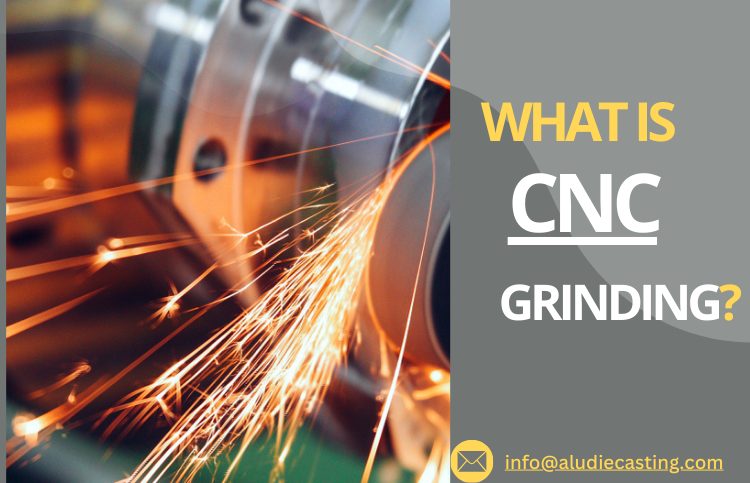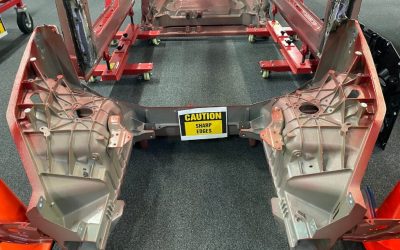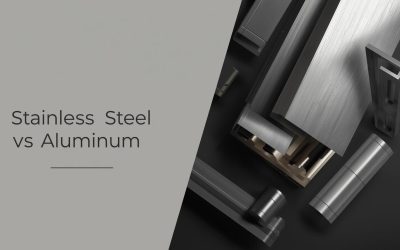CNC grinding is witnessing the latest technologies to manufacture complex parts. For instance, researchers are coming up with new materials for grinding wheels, such as super abrasives and cubic boron nitride, and surface treatments to improve surface finishes and grinding effectiveness.
How did it become possible? Here, we are offering some real-world CNC grinding examples with references.
- Aerospace: Spirit AeroSystems is a big name in the aerospace sector. With CNC grinding method, the company is manufacturing lightweight landing gear
- Automotive: Porsche cars are a major beneficiary of CNC grinding. They manufacture crankshafts and engines to meet their vehicle requirements using CNC grinding.
- Medical: Exactech is a well-known medical company. They use CNC grinding to manufacture customized joint replacements.
- Consumer: Everybody knows about the Apple Company. Many smartphone manufacturers, such as Apple, use CNC grinding to manufacture smartphone camera lenses.
Key Takeaways
- What is CNC grinding?
- How does CNC grinding work?
- What are the benefits of CNC grinding?
- Applications of CNC grinding?
- What factors should you consider when selecting a CNC grinder?
Also Read: What is CNC milling?
What is CNC Grinding?
CNC and grinding are two separate but related techniques. Both are essential for CNC grinding.
Here is how they relate:
Grinding
- Grinding is a machining method. It feeds the workpiece into a rotating abrasive wheel, removing material.
- Grinding is most suitable for parts that should achieve the desired shape, surface finish, and required tolerance.
CNC
- CNC means Computer Numeric Control. It is of great use in manufacturing industries to regulate the movement of tool sand machines.
- In a CNC grinding machine, the motion of the wheel, workpiece, and other parts is controlled by signals from the CNC system.
Combining CNC with the grinding process has led to increased accuracy, precision, repeatability, and production efficiency. Therefore, many industries today rely on CNC grinding.
For instance, General Motors manufactures crankshafts for their high-performance machines using CNC grinders.
Definition of CNC Grinding
CNC grinding is a machining process where the cutting procedure utilizes grinding wheels that enable the workpiece to acquire an exact dimension with improved finishing features. These operations are regulated by computer program instructions under the control of computer numerical systems.
CNC Grinding of Different Materials
This is the most common use of CNC grinding, and the grinding wheel is fed vertically from above. Metals provide good machinability on grinding wheels.
Common metals used include:
Soft metals (aluminum, brass): Less difficult to grind, offering shorter periods and affordable charges. Most suitable for intricate part production requiring uniform surface texture and flatness without the need for Burrs.
Steel: Grinding wheels need higher levels of grit/abrasiveness because of their hardness. Sometimes costs may increase, and the time taken to complete a project may also differ depending on the type of steel used. For instance, stainless steel may be more costly than other types of steel.
Hard alloys (Inconel, Titanium): Incredibly difficult to grind due to their high hardness and heat-resilient properties. This translates to additional costs, possibly more time-consuming than traditional processes, and the fact that specialized grinding wheels are required.
CNC Steel Grinding:
As a sub-category of metal grinding, steel grinding has its own considerations:As a sub-category of metal grinding, steel grinding has its own considerations:
Type of steel: Mild steel is preferred for grinding because it lacks high carbon content compared to high carbon or stainless steel.
Desired finish: Another issue is that obtaining a mirror finish on steel will entail processes such as polishing, which are extra steps that make the possibility more expensive and take time.
CNC Aluminum Grinding:
This softness makes the material preferable for high-speed grinding, while smooth surfaces are easily achievable.
This is in contrast to harder metals, which means that it may be more economical and less time-consuming as it can be processed.
Some of the applications include; the aerospace, automotive, and electronics consumer sections.
CNC Plastic Grinding:
While not as prevalent as metal grinding, CNC grinding can be used for a given types of plastics.
Considerations include:
Plastic type: Some of the types of chemicals that are used are more flexible than others. For instance, when grinding acrylic plastics the work is much easier than it would be when dealing with hard plastics, and this may in some cases, call for the use of particular specific grinding wheels or techniques.
Heat sensitivity: Some of plastic materials are sensitive to heat, and when exposed to the heat produced by the ground system, they end up melting or warping. To minimize these problems, it is necessary to be very specific with the coolant type and grinding parameters.
Desired finish: Some Further Polishing Steps may be necessary to attain a higher degree of gloss surface.
How Does CNC Grinding Work?
CNC grinding is a well-known method for its precision abilities. The process entails not just the equipment but also the operator. Take a look at the workings of CNC grinding, from the simplest components to the complex parts that make this operation feasible.
- Selection of grinding wheel: Selecting the proper abrasive wheel based on the workpiece’s fabric, the grinding form, and the desired finish is critical.
- Setting the machine: You have to set the grinding machine by adjusting the wheel speed and feed rate to calculate the grinding operations.
- Mounting the workpiece: Mounting the workpiece is a crucial step. Make sure to mount the workpiece onto the machine carefully. You should also ensure it is correctly aligned with the grinding wheel.
- Grinding Operation: Now, the grinding wheel comes into play. The grinding wheel removes material from the workpiece in a controlled manner to achieve the desired form and surface finish.
- Coolant Application: Heat could harm the workpiece and compromise its integrity, so carefully observe the coolant during the grinding operation.
- Finishing the Process: After the grinding process, look into the final product for accuracy and finish. If wanted, carry out any additional operations to perfect the result.
Benefits of CNC Grinding
Compared to other traditional grinding methods, CNC grinding offers many advantages, like:
- Accuracy: CNC grinding offers higher accuracy than old, traditional grinding methods. CNC grinding has become the top choice for industries that require precision components.
- Exceptional Surface Properties: One of the main advantages of CNC spinning is the incredible surface texture it can achieve. Accurate and controlled CNC grinding produces very smooth and uniform products.
- Versatility: CNC grinding machines are versatile. Able to handle large work items, shapes, and materials.
- Repeatability: Once a CNC grinding machine is programmed for a specific job, it can execute that job exactly several times. This is particularly useful in high-volume production situations where accuracy is the key.
- Efficiency: CNC grinding can often complete jobs faster than manual grinding systems.
- Waste reduction: CNC grinding machines can reduce waste due to their accuracy and precision.
Applications of CNC Grinding
CNC grinding will continue to revolutionize manufacturing by 2024. CNC grinding offers efficiency in a variety of industries. Here are some solid programs with proven effectiveness.
Aerospace and Defense: (turbine blades, landing gear)
CNC grinding is best known for the energy-saving design of small aircraft components, such as turbine blades and landing gear, essential for fuel efficiency.
The release of GrindingHub in 2024, the first trade show for grinding technology, showed how companies like Airbus use CNC grinding for next-generation aircraft parts.
Automotive (Crankshafts, Camshafts)
Electric vehicle (EV) devices require precision and unique surface design to ensure efficiency and long range.
The 2024 market research report by Grand View Research projects a significant increase in the demand for CNC grinding machines in the EV industry due to the rise of electric vehicles
Companies like Tesla may use CNC grinding for their high-performance crankshafts and camshafts.
Medical Devices (Organ Replacement, Surgical Devices)
CNC grinding has significant applications in the medical field, such as joint replacement and surgical instruments.
By combining CNC grinding with 3D printing and scanning technology, manufacturers can create personalized implants that perfectly match a patient’s specific anatomy. This allows for fit, comfort, and mobility.
Table comparing CNC grinding and traditional grinding:
| Feature | CNC Grinding | Traditional Grinding |
| Process Control | Computer-controlled, precise and repeatable | Manual, requires skilled operator |
| Accuracy | High accuracy and tight tolerances | Accuracy depends on operator skill |
| Speed | Faster for complex shapes and high volume | Slower, especially for complex shapes |
| Complexity | Can handle complex shapes and geometries | Limited to simpler shapes |
| Setup Time | Faster setup due to automation | Slower setup, requires manual adjustments |
| Labor Cost | Lower labor cost due to automation | Higher labor cost due to skilled operator requirement |
| Material Waste | Less material waste due to precise control | More material waste due to the potential for operator error |
| Applications | Ideal for high-volume, precision parts, complex shapes | Suitable for simpler parts, low-volume production, or limited-budget |
Cost and Turnaround Time for CNC Grinding
Note: This is an approximate price. Please get in touch with the nearest CNC machining company for real prices
| Complexity | Material | Estimated Cost per Piece (USD) | Estimated Turnaround Time |
| Simple (flat surfaces) | Soft metals (aluminum) | $5 – $20 | 1-3 days |
| Moderate (cylindrical with some features) | Steel | $20 – $50 | 3-5 days |
| Complex (multiple features, tight tolerances) | Hard alloys (e.g., Inconel, Titanium) | $100+ | 5-7+ days |
| Moderate | Plastics | $15 – $40 | 2-4 days |
| Simple | Hardwoods | $10 – $25 | 1-2 days |
What are the Types of CNC Grinding Machines?
A CNC grinding machine uses computer numerals to remove material from a workstation with a grinding wheel precisely. Here’s a breakdown of some of the most widely used types, and their advantages and disadvantages:
CNC Surface Grinders
Pros
- Versatile: Handle different materials and sizes to create flatter objects.
- High Accuracy: Get excellent dimensional tolerances and high finish.
- Various grinding options are peripheral, face, and angle for different applications.
Cons
- Limited to flat surfaces: not suitable for grinding complex geometries.
- Workpiece Size Restrictions: Cannot accommodate very large or heavy pieces.
- Slower removal than some other methods of yawning.
CNC Cylindrical Grinder
Pros
- Designed for grinding cylindrical workpieces: ideal for shafts, rods, and rolls.
- High accuracy to achieve accurate diameters and roundness.
- Inner and Outer Grinding Capacity: Handles both internal and external grinding in cylindrical workpieces.
Cons
- Limited to cylindrical form: not suitable for grinding flat objects or complex geometries.
- Can be difficult to configure for specific grinding applications.
- Several layouts are needed to grind both the inside and the outside.
CNC Centrifugal Spinner
Pros
- Fast and efficient material removal: suitable for large-scale production.
- Cost-effective to grind simple shapes such as shafts and pins.
- Automatic loading options are available for continuous operation.
Cons
- Limited workstation size and shapeability: ideal for sudo, cylindrical operation.
- Lower precision than other grinding methods: probably unsuitable for critical tolerances.
- Specialized equipment is needed for workshops of different sizes.
Leading CNC Grinder Manufacturers
Leading CNC grinder manufacturers are spread across many countries, each with strengths in specific areas. Here are some of the key players:
Chevalier
Chevalier is a major player in the manufacturing of CNC grinding machines, with a special focus on CNC grinding surfaces. They also offer grinding machines, but their specialty appears to be surface grinding.
- Focus on surface grinding: Their dedication to surface abrasions means they have expertise in achieving high precision and a good finish. A variety of abrasive surfaces may be offered with materials optimized for flatness and high resistance.
- Competitive pricing: Chevalier offers competitive pricing compared to other manufacturers with similar features. This can be an attractive option for customers who are not happy with debt.
- Models and machines: Chevalier offers different grinding machines of various capacities and capabilities, like:
- FSG-ADIV Series.
Walter
Walter is a manufacturer of CNC grinding machines specialized for sharpening tools.
Focus: WALTER mainly focuses on CNC grinding machines for manufacturing tools and cutting. Walter machines can handle complex tool geometry. Their machines are suitable for a variety of tool materials, including:
- HSS (high-speed steel)
- Carbide
- PCD (polycrystalline diamond)
Models and machines: WALTER CNC offers a variety of tool-cutting machines with a variety of options to meet different needs:
- HELITRONIC POWER 400
- HELITRONIC VISION 400 L
- HELITRONIC MICRO
STUDER
STUDER is a popular manufacturer of high-precision cylindrical grinding machines. They are known for their unique quality and advanced technology. The company dedicates its services to meeting the requirements of various industries. Here is a breakdown of what STUDER offers:
Focus: The company’s primary focus is on CNC cylindrical grinding machines. These machines are specially designed to grind the outer and inner curves of workpieces precisely and to finish the unique surface
Models and machines: STUDER offers CNC cylindrical grinding machines to meet a variety of needs, including:
- Universal cylindrical suckers
- High-speed rolling machines
- Crankshaft Grinding Machines
- Non-circular milling machines
Kellenberger
Kellenberger is the renowned Swiss manufacturer of universal CNC grinding machines of high quality and manufacturing These machines are very popular because of their versatility and flexibility.
Focus: Kellenberger specializes in universal CNC grinding machines. These machines are designed to handle a variety of grinding tasks, allowing flexibility for shops requiring different materials.
Models and machines: Kellenberger offers a variety of grinding machines for different tasks and needs, like:
- BOULEPRO 200
- KELLENBERGER 10
- VOUMARD 30
- HAUSER 2000
Factors to Consider When Selecting a CNC Grinder
CNC grinders are powerful precision material removal machines. Choosing the right one requires careful consideration as many factors can greatly affect your productivity, efficiency and overall success in the product. Here’s why it’s important to weigh these factors before choosing a CNC grinder:
Type of Grinding Needed
Select the main grinding task. The tasks can be surface grinding, cylindrical grinding, internal grinding, or tool grinding.
Workpiece Size and Material
Carefully consider the size and material of the workpiece. Different machines have different capabilities and can be more appropriate for specific applications.
Required Precision and Surface Finish
Specify the level of accuracy and surface finish required by your parts. Higher accuracy generally requires more advanced machines.
Production Volume and Budget
Calculate the number of regular parts you will grind. Efficient environments can benefit from faster, more responsive automation.
Conclusion
In conclusion, CNC grinding is essential for manufacturing and shaping high-precision parts in various industries. These advanced machines provide excellent finishes and tight tolerances, which are important for aerospace, automotive, and medical device components. With increased automation and demand for more complex geometries, CNC grinding continues to evolve, ensuring efficiency and accuracy in a competitive environment.






0 Comments